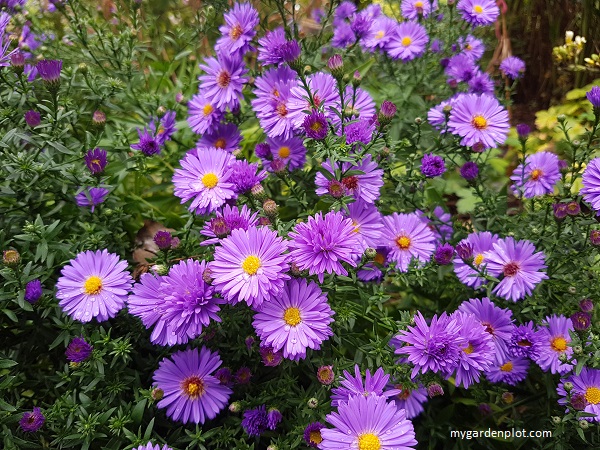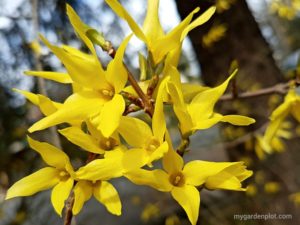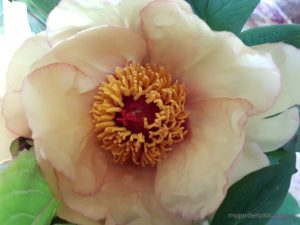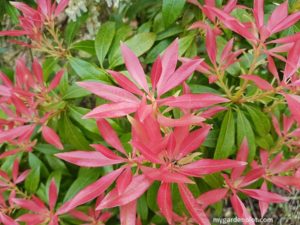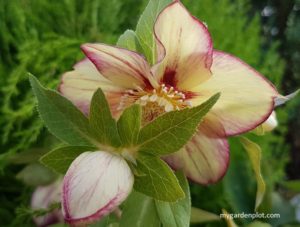About Aster And How To Grow Them: Michaelmas Daisy
When you see aster bloom, you know it makes the end of summer. This perennial has a long blooming season, though. It is a popular plant for late summer and fall gardens when most other plants are past their prime for the season. Growing aster is easy with this guide. Read below how to plant and care for aster to produce masses of beautiful cheery flowers.
The aster daisy-like flowers bloom from August through to the end of October. The exception is Aster alpinus and A. tongolensis ‘Napsbury’, which flowers from late spring to early summer. Asters are dependable and bring masses of flowers to a garden, attracting bees and butterflies. It comes in a range of colours from white and pinks to lilac and deep purple. The size varies from dwarf size to tall cultivars reaching over 1.2 metres (4 feet).
The Names: Aster, Michaelmas Daisy, Starwort
The aster plant is native to North America, Europe, Asia and South Africa. The genus name aster comes from the Greek word for ‘star’, astéri, some say because of the flower being star-like. And others, to the story of Goddess Astraea, from Greek mythology, who after hearing that the flood that took the lives of mortals on earth, she wept, and where her tears landed, the aster flower emerged. Though fictional, it is a touching story. This plant is also known as Michaelmas Daisy. This common name is credited to their flowering around September 29, the day of a Christian festival, Michaelmas. And then there is Starwort, an earlier English name which is seldom used today for this plant.
The Aster Flowerhead
The aster flowerhead is comprised of ray florets, a disk floret and a cluster of tiny flowers. The ray florets are the petals surrounding the disk floret, which is the centre section of the aster flowerhead. Interestingly, if you look closely at the disk floret, you will notice how it comprises many tiny individual flowers (see photo below).
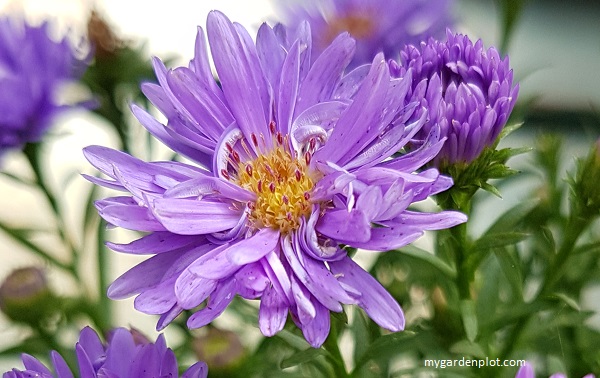
Aster At A Glance
Type: Perennial
Location: Full Sun
Blooming Season: Late Summer / Autumn (Fall)
Size: Varies from 25 cm (10 inches) to over 1.2 metres (4 feet)
When To Prune: Cut Back Late Winter / Early Spring
Zones: 4 – 9 (See: Cold Hardiness Zone Chart)
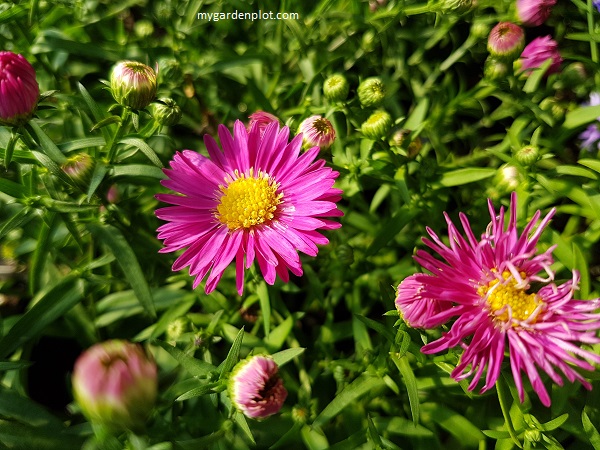
Where To Plant And Grow Aster
Aster thrives in a sunny location with moist, fertile well-draining soil. Ensure it does not become waterlogged. Some varieties can tolerate some shade, but most need six to eight hours a day. New plants can be planted out in spring or fall time.
Aster is also used in container gardening and looks beautiful in a terracotta pot, as well as rock gardens and small garden borders.
Space when planting in a group as aster plants can spread its width to match its height. While some varieties are aggressive growers, they do not fit the invasive definition. Check the plant tag at the garden centre when you purchase your new plant. Many of the new varieties are moderate growers.
How To Care And Prune Aster
To encourage a more compact growth or dome shape, trim back with hedging shears in spring. Cutting off the tips in early summer can also encourage asters to become bushier.
Taller aster varieties over 60 cm (2 feet) benefit from staking.
Fertilize monthly during the growth period using a balanced liquid fertilizer, especially with new plants. A light application goes a long way. Alternatively consider an annual application with a slow-release fertilizer added in spring. This is preferable with established plants.
Water regularly and deeply about two or three times a week during the hot weather.
Deadheading keeps the plant tidy by removing the faded flowers, and this promotes new blooms. Deadheading will stop self-seeding, though. If you wish to encourage self-seeding, leave a few flowerheads to seed.
Thinning, by removing thin stems from the ground level, will promote air circulation and help counter any mildew problems.
Aster plants die back in winter. Leave the dead shoots but clean up the area by removing any plant matter. In late winter or early spring, cut back established asters, and add a thin layer of compost around the plant base to ready it for new shoots.
Established plants should be divided early spring every two to three years to ensure longevity and healthy blooms.
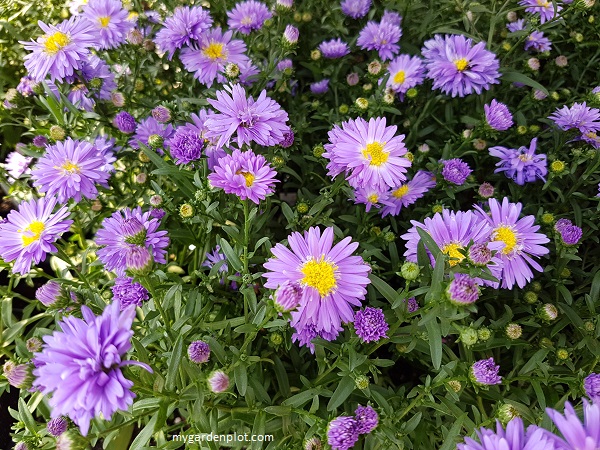
Pests And Diseases That Affect Aster
The regular garden pests, aphids, slugs and snails can cause some trouble. It is deer resistant, but rabbits may cause damage. Fungal problems, such as powdery mildew, can also affect aster.
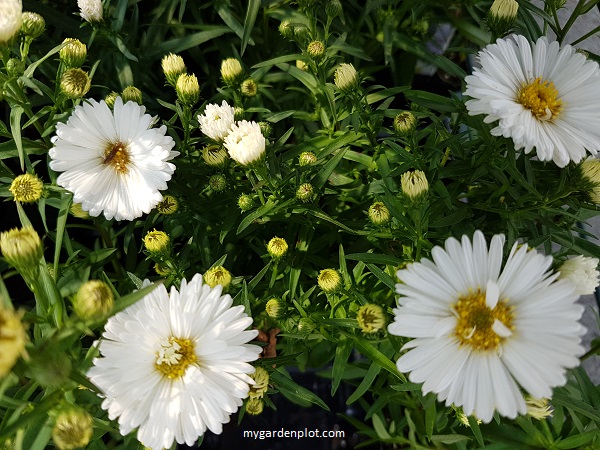
Spend more time in the garden! Large choice of gardening supplies for your garden bed and maintaining lawns, and fun art and sculptures for your garden and vegetable patch. Check out the latest deals for garden supplies. View the awesome deck decorations and patio furniture, and the necessary garden tools, and more.

